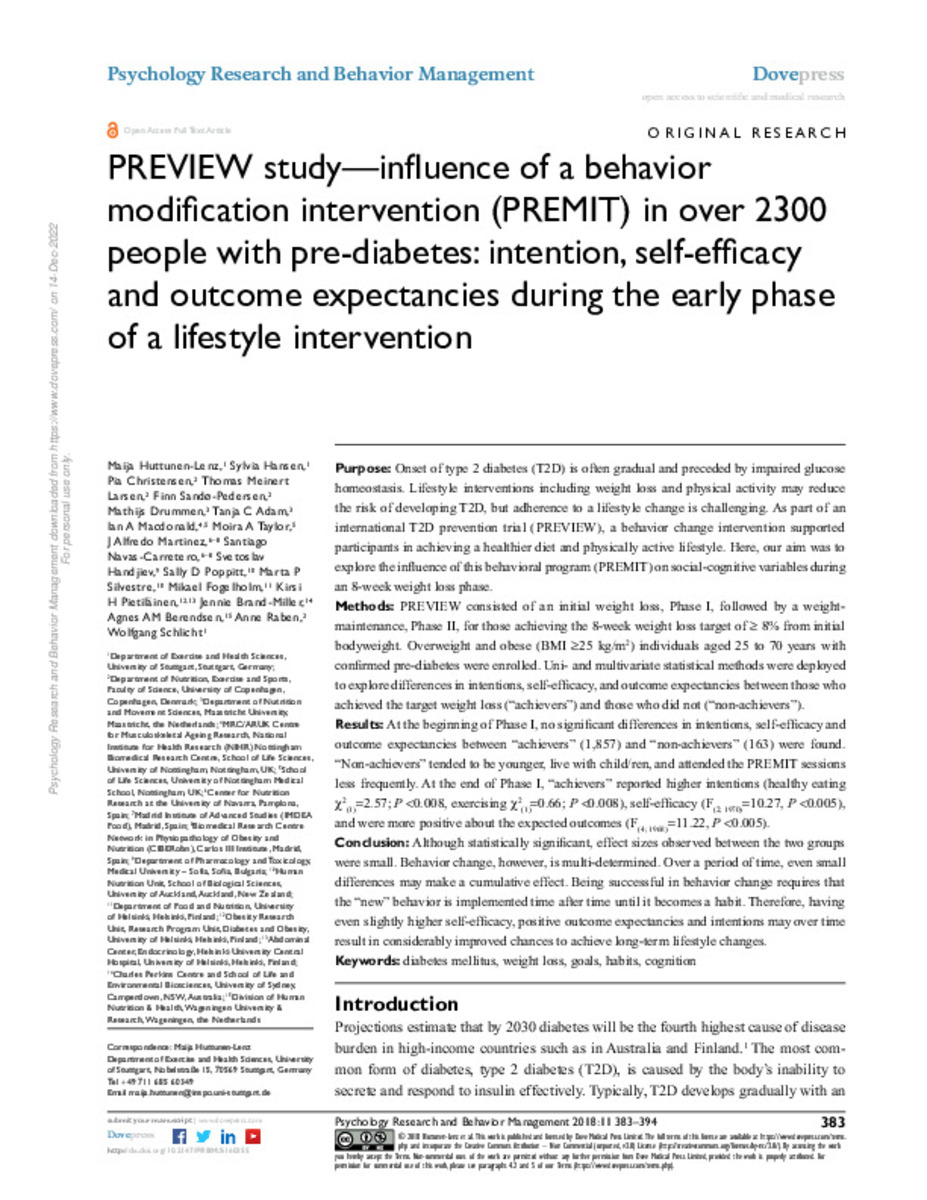PREVIEW study-influence of a behavior modification intervention (PREMIT) in over 2300 people with pre-diabetes: intention, self-efficacy and outcome expectancies during the early phase of a lifestyle intervention
Keywords:
Diabetes mellitus
Weight loss
Goals
Habits
Cognition
Publisher:
Taylor and Francis Group
Note:
This work is published and licensed by Dove Medical Press Limited. The full terms of this license are available at https://www.dovepress.com/terms. and incorporate the Creative Commons Attribution – Non Commercial (unported, v3.0) License
Citation:
Huttunen-Lenz, M. (Maija); Hansen, S. (Sylvia); Christensen, P. (Pia); et al. "PREVIEW study-influence of a behavior modification intervention (PREMIT) in over 2300 people with pre-diabetes: intention, self-efficacy and outcome expectancies during the early phase of a lifestyle intervention". Psychology research and behavior management. 11, 2018, 383 - 394
Statistics and impact
0 citas en

0 citas en

Items in Dadun are protected by copyright, with all rights reserved, unless otherwise indicated.







